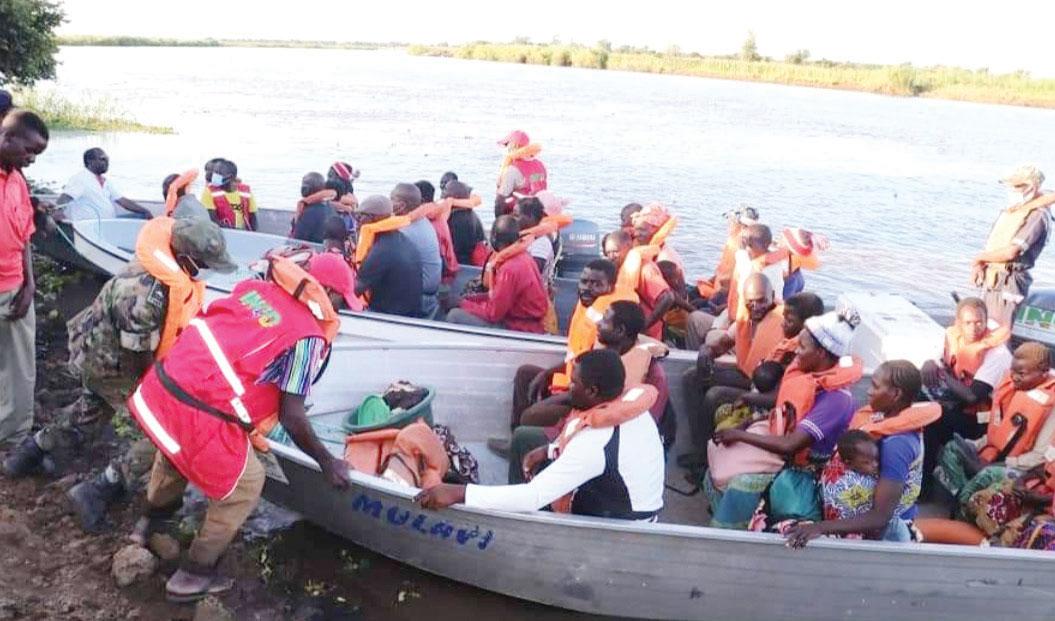Africa-Press – Malawi. Many countries in the Southern African region, Malawi inclusive, have not been spared from the devastating effects of climate change, which has led to natural disaster occurrences, not to mention prolonged drought in other areas.
As a member state of the Southern African Development Community (Sadc), Malawi on September 08 this year adopted the Maputo Declaration on bridging the gap between early warning and early action.
The declaration calls for the World Meteorological Organisation (WMO) and the United Nations Secretary General to provide every citizen on planet earth with access to reliable, accurate and timely early warning systems. Recently, stakeholders had an interaction to work out how Malawi can effectively prepare to handle anticipated natural disasters.
Commissioner for Disasters in the Department of Disaster Management Affairs (DoDMA), Charles Kalemba, emphasised the need for Malawi to be proactively anticipating disaster occurrences as opposed to being reactionary. This was in relation to the country’s preparation for natural disasters such as floods and cyclones.
“Effective response to disasters requires a coordinated multi-sectorial action, informed by science and followed by concrete interventions which enable urban and rural communities to handle the threats and then reduce the risks associated with natural disasters across the country,” Kalemba said.
local preparedness
He emphasised that disaster preparedness and response planning as well as financing are critical to ensuring that strategies and mechanisms are in place to save lives and property as well as reduce the impact of the disasters and facilitate timely assistance.
“The critical role of anticipatory action in Disaster Risk Management cannot be overemphasized, more especially with its focus that all selected anticipatory actions and their financing are pre-defined and agreed to allow for quick, early action and support implementation within the window of opportunity,” Kalemba said.
Malawi Red Cross Society (MRCS) Director of Programmes, Prisca Chisala, said having anticipatory actions can provide space for upscaling the good practices that various institutions are promoting.
She said time has come for players to consolidate their work, coordinate and respond to emerging disasters. “I call upon everyone to take part in the processes as disasters have become more prevalent each and every year,” Chisala said.
As they say, an early bird catches the worm and Gerald Chimuweluze from Traditional Authority Mwambo’s area in Zomba District can attest that volunteers in his home area are combining indigenous and scientific knowledge to help prevent and manage disasters.
“We use traditional materials like drums to warn fellow villagers of floods and other disasters. People were trained to translate the drum beat into a warning against an impending danger,” he said. Chimuweluze chairs the Early Warning Unit which is under Chaweza Village Civil Protection Committee (VCPC).
“My roles include raising awareness on floods. We have river line gauges along the Phalombe River to warn us of water levels. The gauge is painted in green, yellow; red. Green means the water levels are okay, at yellow line, that’s when we raise alerts through phone calls to those people living on the lower side of the river. They in turn pass on the message to their colleagues,” he added.
He further explained that when the waters levels hit the red paint, it is time for action. “We again call those living on the lower side of the river. We wear our gumboots, rain-coats, carry our whistles and the drums before going around the areas,” he said.
Whenever the drums get soaked in the rains, the volunteers resort to use of megaphones to spread the warning. Besides sending alerts, they have facilitated construction of a 3.7 Kilometre long dyke along the Phalombe River, notorious for hair raising floods like the infamous Phalombe flush floods of 1991 that killed and displaced thousands of villagers.
“The situation has improved now. In the past, we used to experience damaging floods. We have had floods like between 2014 and 2015 which washed away crops, houses and livestock in our areas,” Chimuweluze added.
It is against such a background that when a USAID five-year funded Resilient Food Security Activity was introduced in the area, Chimuweluze and 14 others volunteered to be members of Chaweza VCPC.
They were trained on scouting the environment for signs of impending disasters. “We have already mobilised four bags of pigeon peas and five bags of maize to be distributed among those that will be affected by natural disasters this year,” he said.
Chiefs are also integrated in the efforts. “Our Group Village Headman Chaweza recently called for a meeting at his courtyard where he asked every household to contribute K100 each to be used should disaster strike this year again,” he said. Titukulane Programme, a consortium led by CARE Malawi gave the committee members tools for use in early warning as well as responding to disaster.
Meanwhile, a recent World Bank Country Climate Change and Development Report for Malawi shows that climate change would make it harder for Malawi to achieve its developmental goes unless it supplements effort with additional investment in adaptation.
The report further advised Malawi government to immediately start channeling investment towards climate resilient Infrastructure and halt land degradation and forest loss to improve agriculture productivity and carbon capture
For More News And Analysis About Malawi Follow Africa-Press






